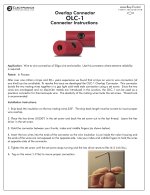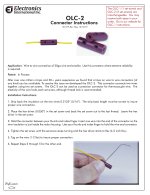The EGT on one cylinder is slow to come alive at startup and the reading fluctuates before settling down about 30 minutes into a flight and is generally in line with the other 3 cylinders. I removed all of the probes and wire brushed any corrosion off of both the probe and exhaust pipe. The symptoms follow the probe when swapped to a different cylinder. Are these readings indicative of a failing EGT probe?
Thanks,
Mike
Thanks,
Mike






